Supported Postgres versions
Anything on or after Postgres 12Enable Logical Replication
You don’t need to follow the below steps if the settingsrds.logical_replication is 1 and wal_sender_timeout is 0. These settings should mostly be pre-configured if you are migrating from another data replication tool.
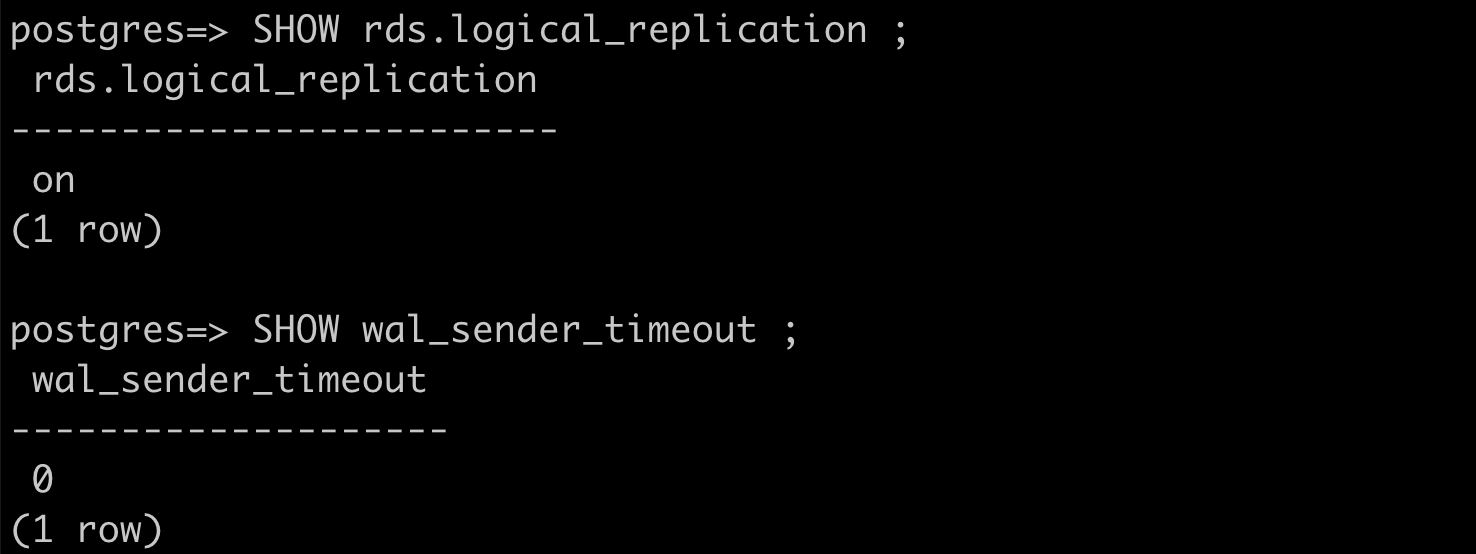
Checking if the logical replication is already enabled
-
Create a new parameter group for your Postgres version with
rds.logical_replicationset to 1; andwal_sender_timeoutset to 0.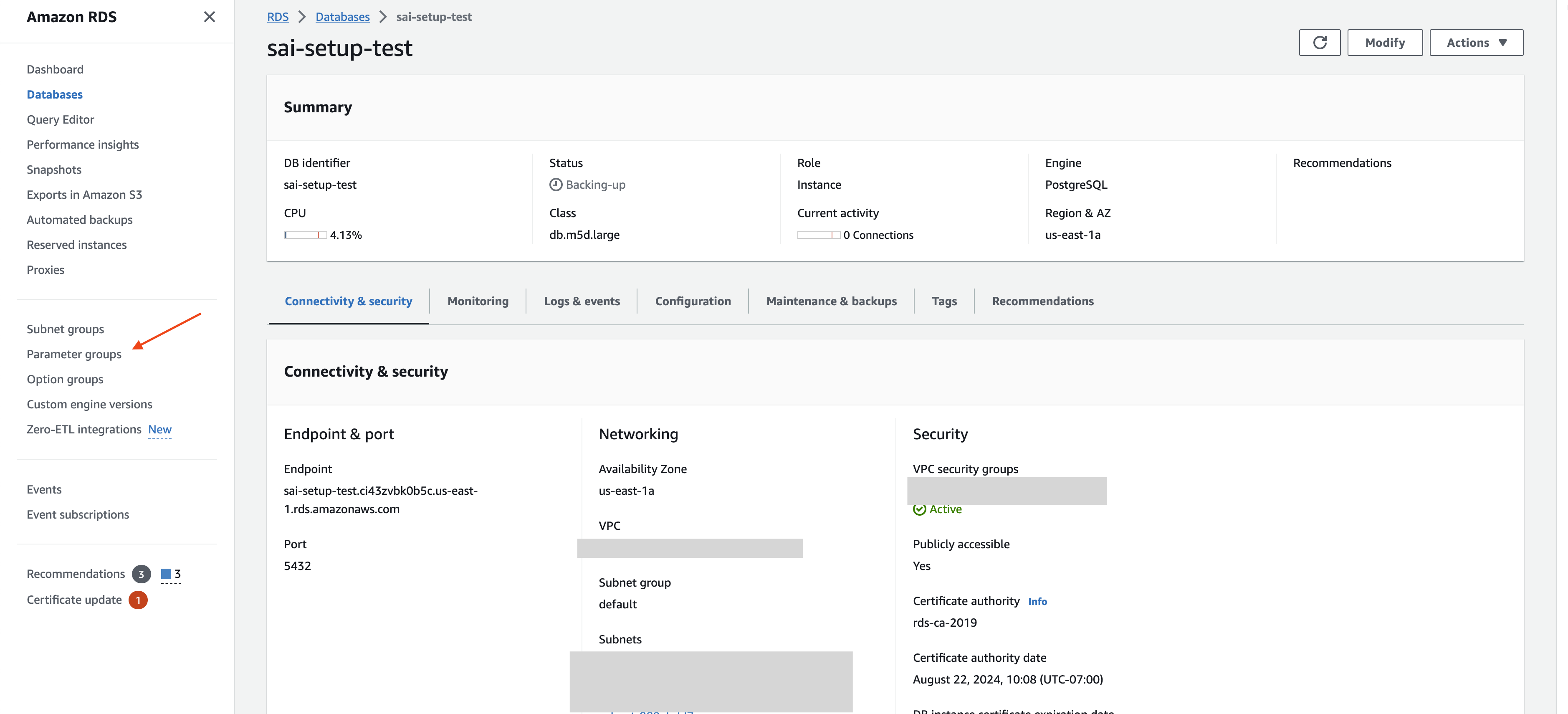
Where to find Parameter groups in RDS?
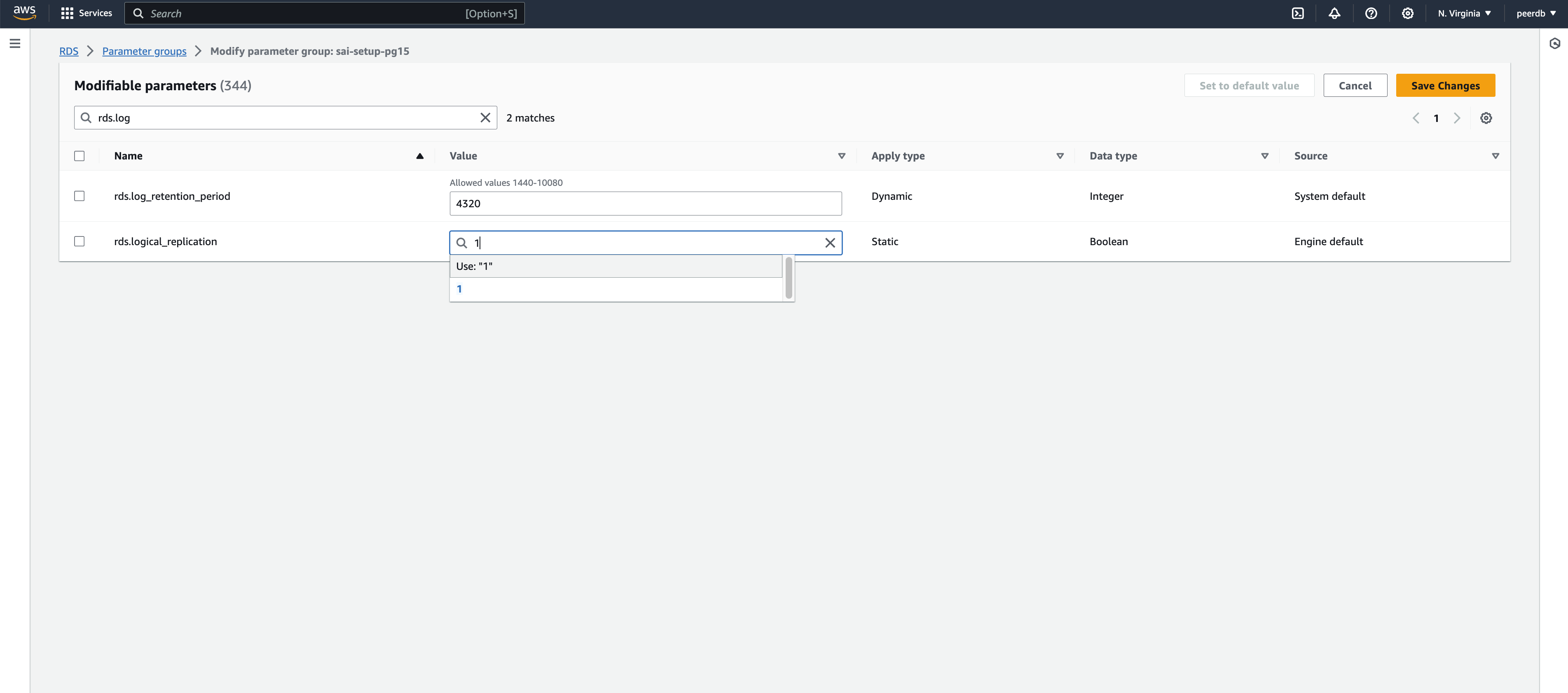
Changing rds.logical_replication
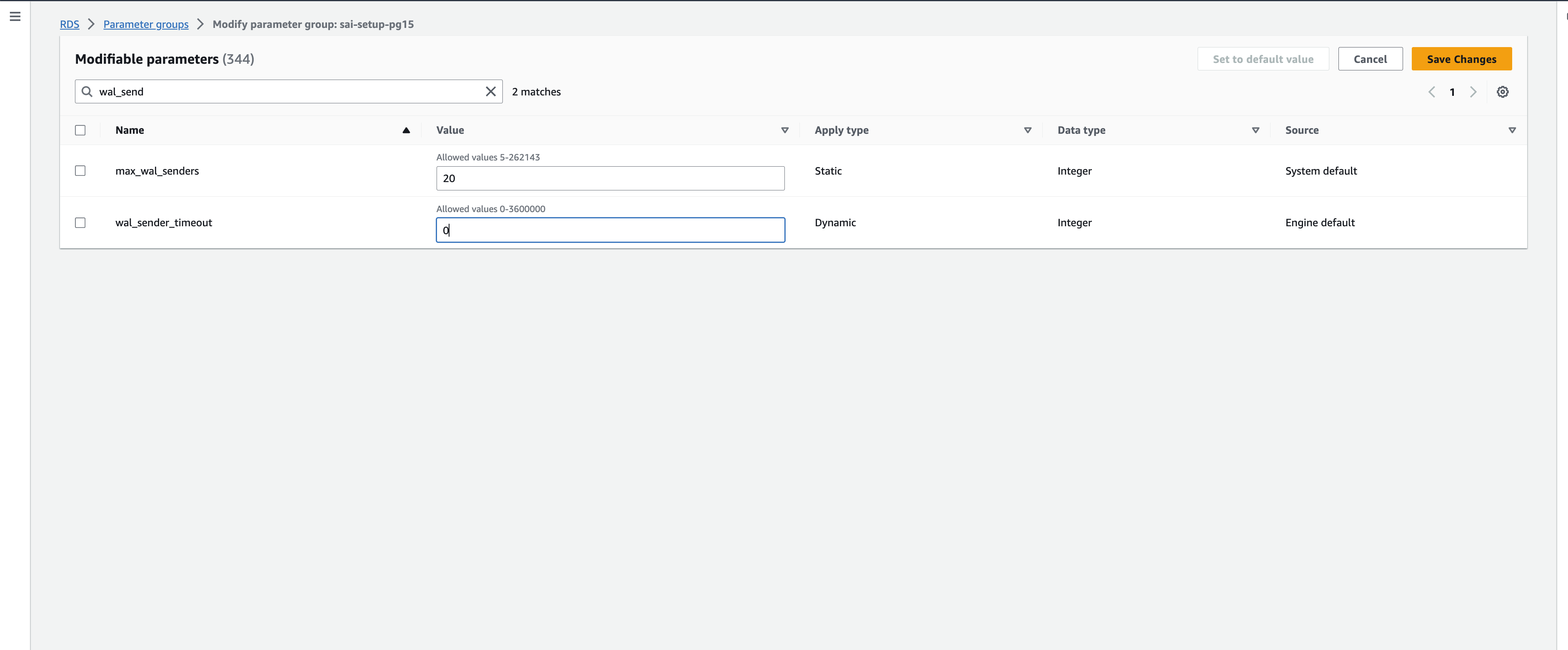
Changing wal_sender_timeout
-
Modify the RDS Postgres database by adding the new parameter group.
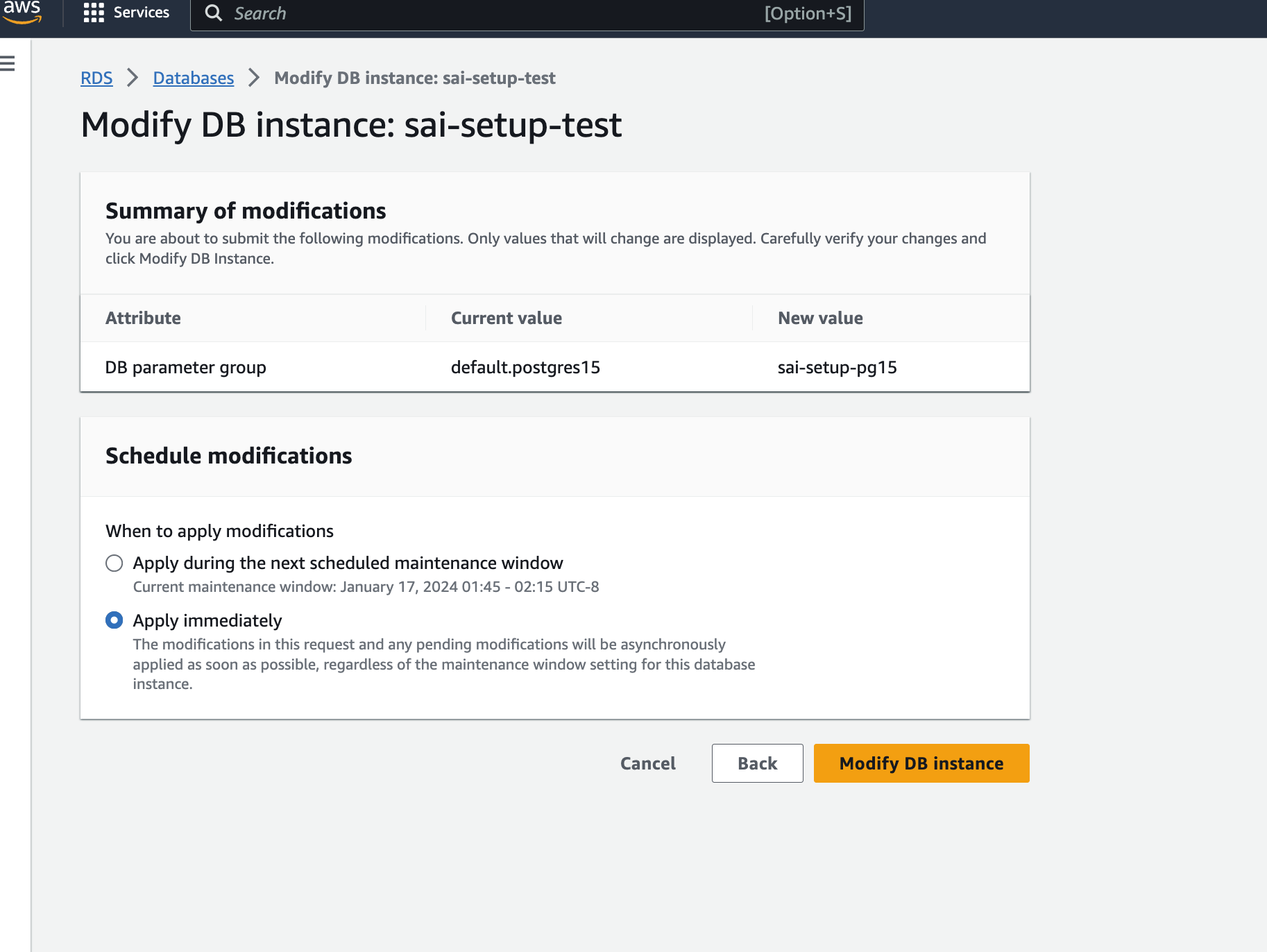
Modifying RDS Postgres with new parameter group
-
Reboot your RDS Postgres database for the above parameters to kick in.
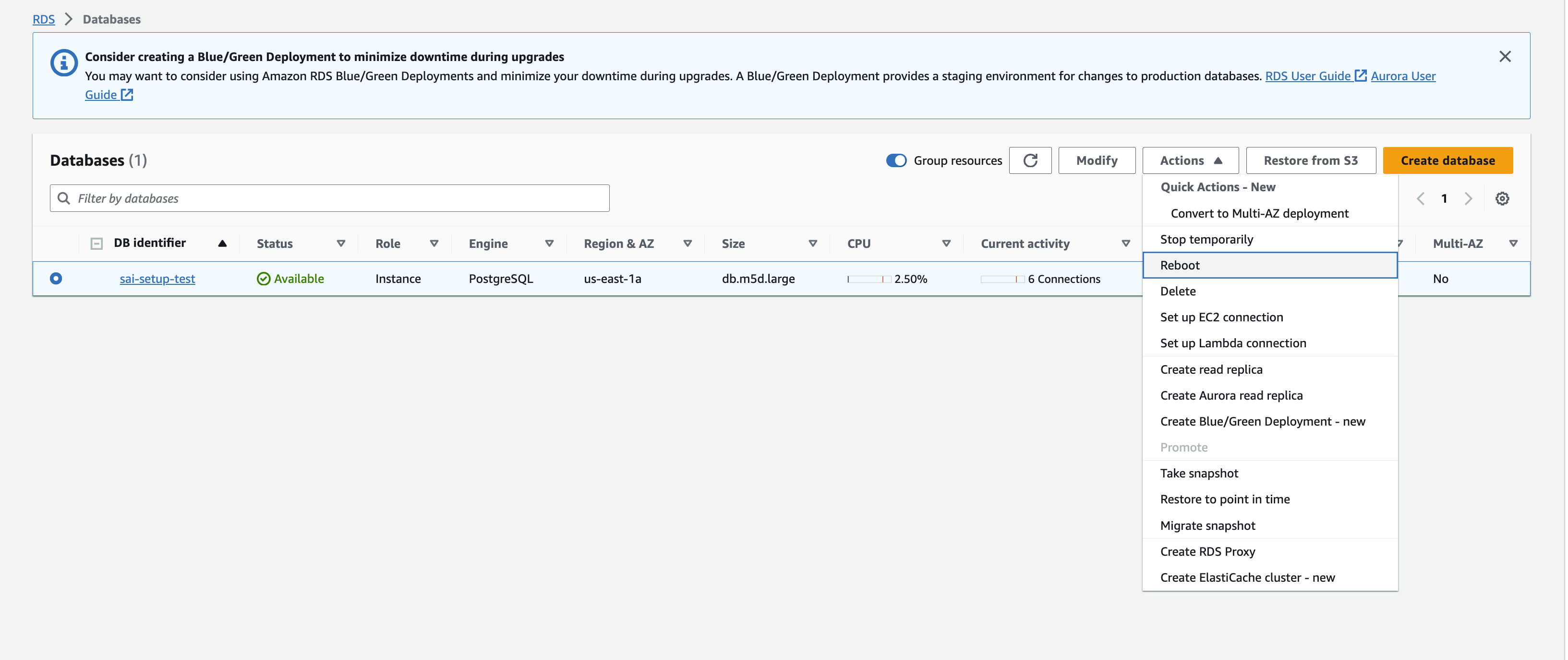
Reboot RDS Postgres
Creating PeerDB User and Granting permissions
Connect to your RDS postgres through the admin user and run the below commands:-
Create a Postgres user exclusively for PeerDB.
-
-
Grant read-only access to the schema from which you are replicating tables to
peerdb_user. Below example shows granting permissions for thepublicschema. If you want to grant access to multiple schemas, you can run these three commands for each schema. -
-
Grant replication access to this user:
-
-
Create publication that you’ll be using for creating the MIRROR (replication) in future.
-
The PeerDB user must not be restricted by RLS policies, as it can lead to missing data. You can disable RLS policies for the user by running the below command:
PeerDB SSH Tunneling Guide (Optional)
Sometimes to connect to your Postgres database you may need PeerDB to use an SSH tunnel. This is typically used when your database is not publicly accessible and you need to connect to it a jump server in your VPC. This is done by creating an SSH tunnel to your jump server and then connecting to the database through the tunnel. All of this is handled by PeerDB natively.1
Generate a key-pair
Generate a key-pair using the following command:This will generate a private key (
peerdb_key.pem) and a public key (peerdb_key.pub).2
Add public key to your jump server
Add the public key to your jump server. This can be done by adding the public key to the
~/.ssh/authorized_keys file on the jump server.3
Add private key to the connection
When creating a Postgres peer you can specify the option to use an SSH tunnel. There you will be able to provide the private key you generated in the first step along with the jump server details.
Safe list PeerDB Cloud IPs
If you are using PeerDB Cloud safelist public IPs of your PeerDB Cloud instance by editing theInbound rules of the Security group in which your
RDS Postgres (OR the Jump Server/Bastion if you are using SSH tunneling) is located.
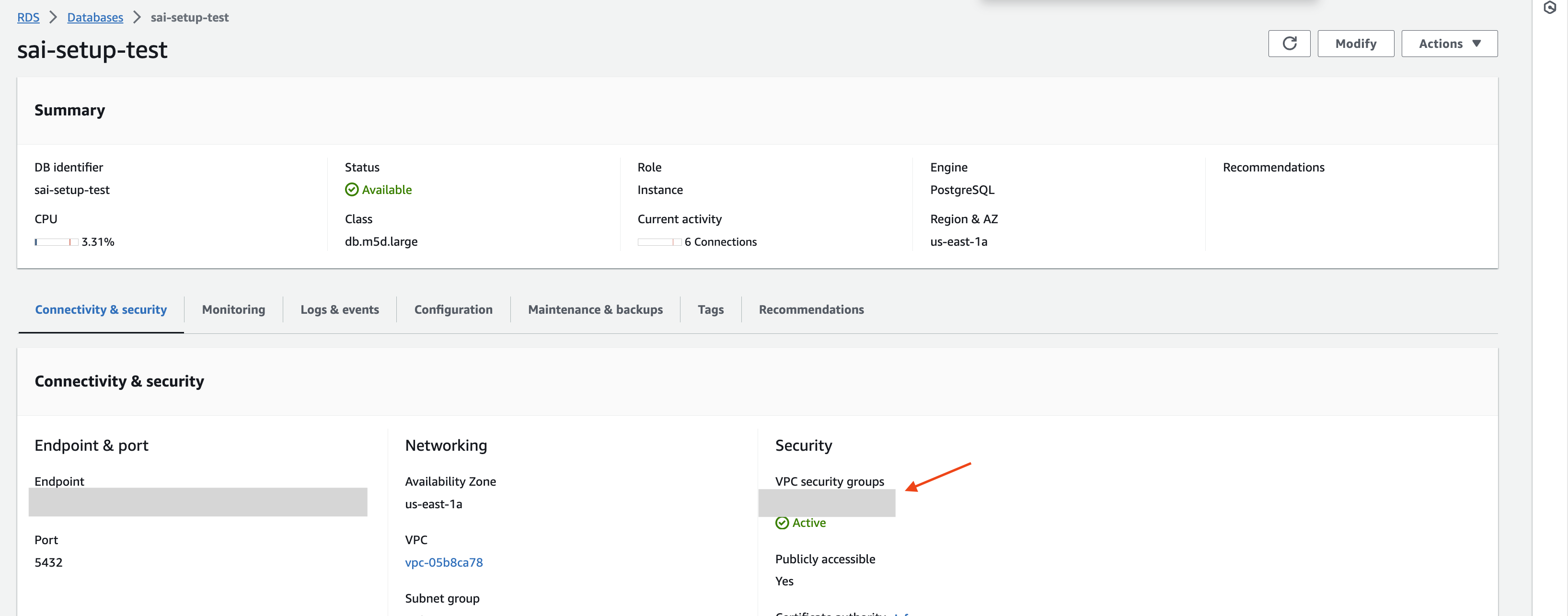
Where to find security group in RDS Postgres?
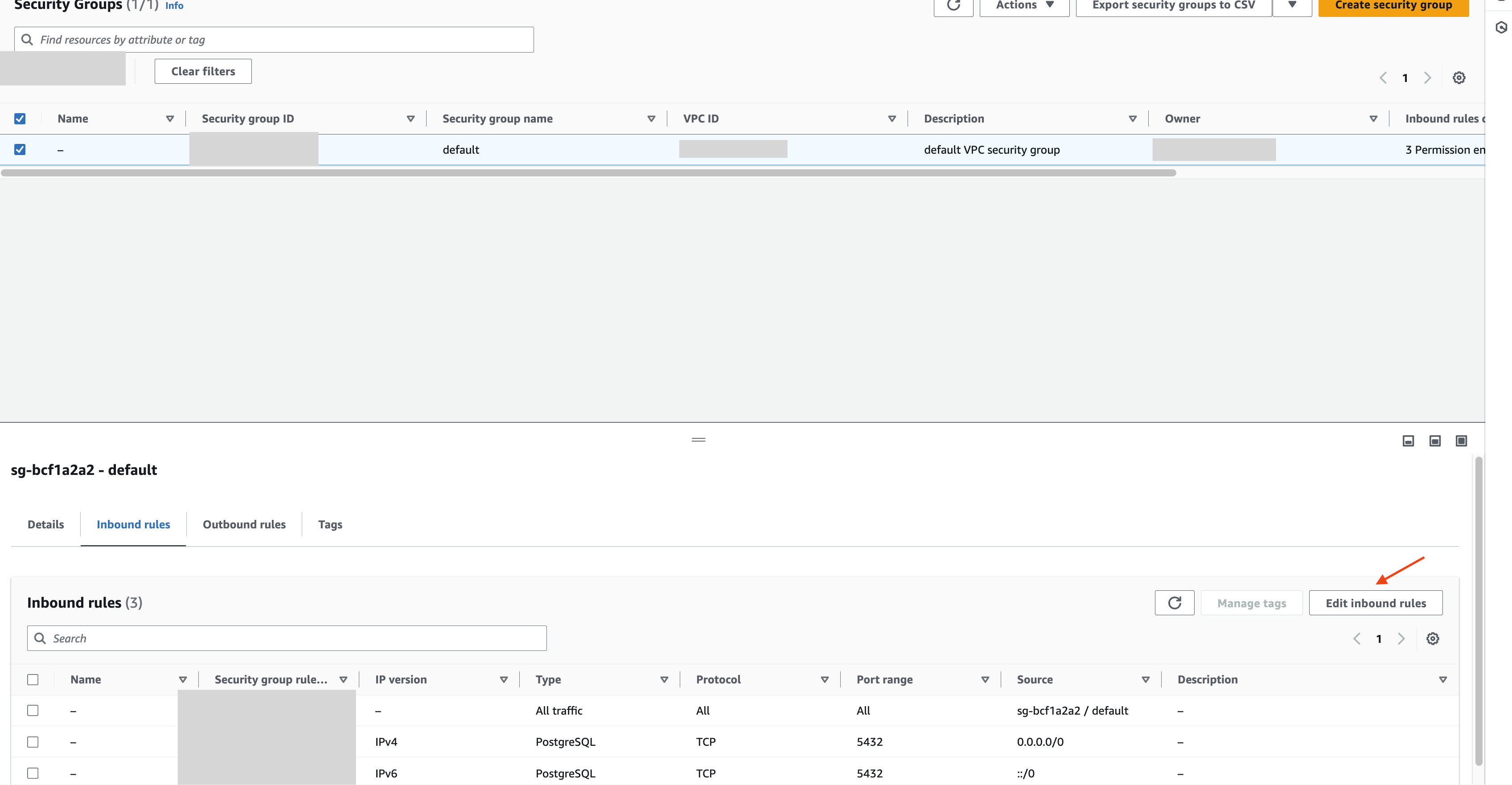
Edit inbound rules for the above security group
Create RDS Postgres Peer in PeerDB
Through the PeerDB UI, create the RDS Postgres Peer using thepeerdb_user that you created in the previous step.
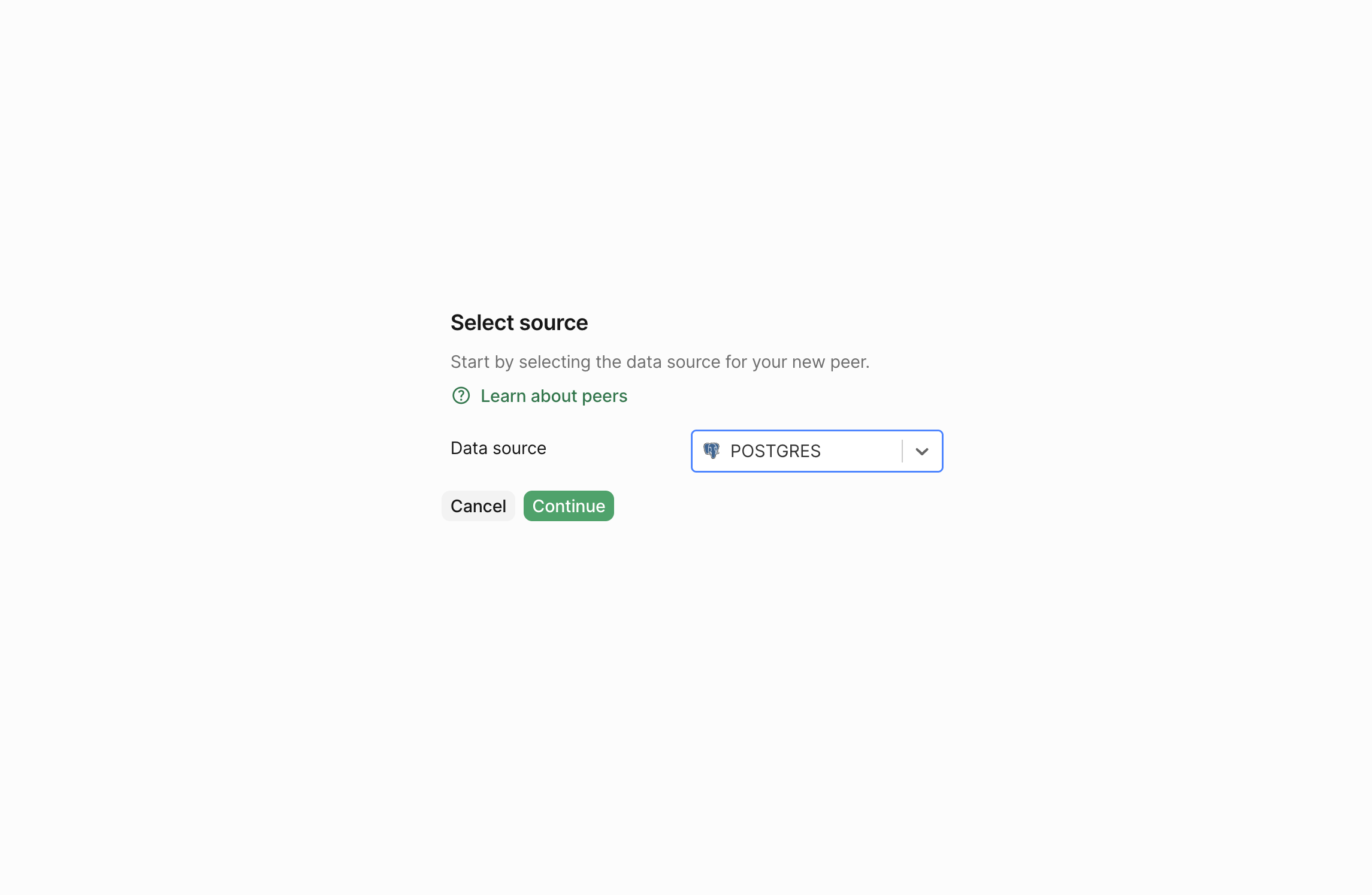
Create peer drop down
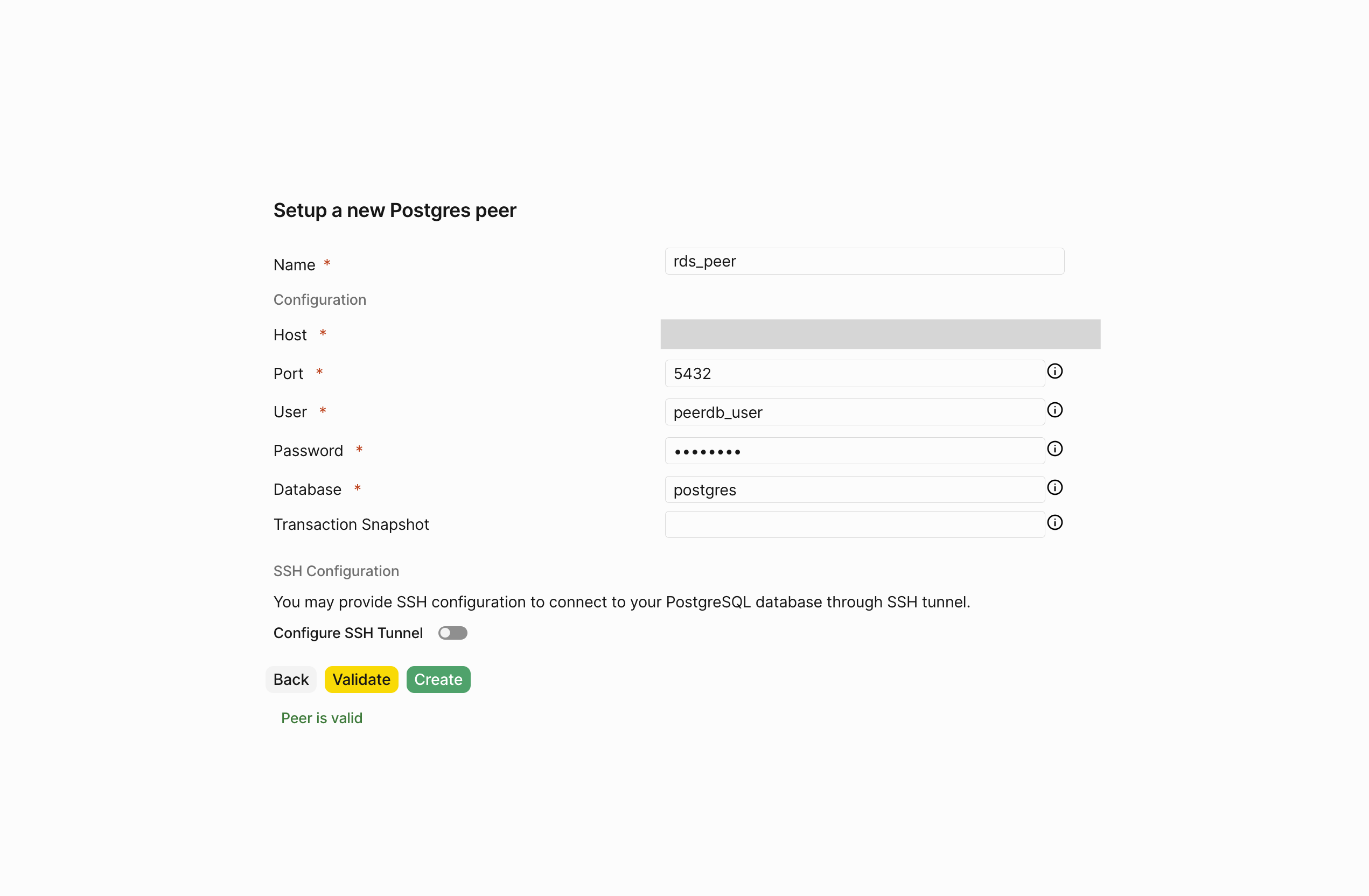
Create RDS Postgres Peer

